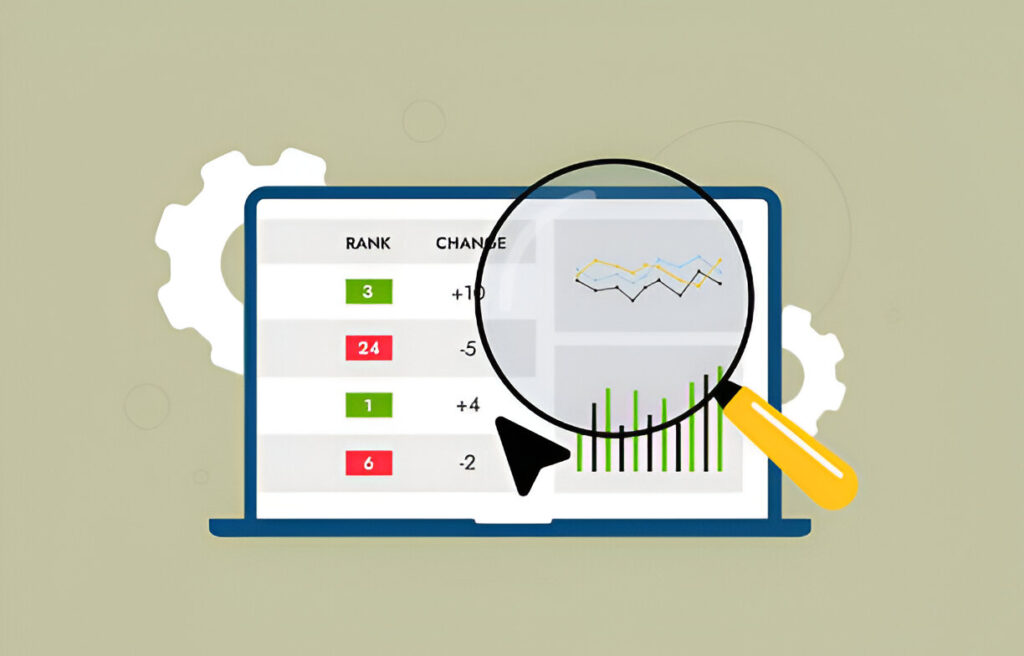In 2025, staying ahead of your competition isn’t optional—it’s survival. Whether you’re running an eCommerce store, a digital agency, or a SaaS platform, tracking what your competitors are doing can reveal untapped opportunities, pricing strategies, content gaps, and customer acquisition methods that you can use to grow faster and smarter.
This comprehensive guide explores the 16 best competitor monitoring tools in 2025, plus how to use them like a pro. We’ve handpicked platforms that help you monitor SEO performance, PPC campaigns, pricing changes, social media activity, content strategies, and more.
Let’s dive in.
What Are Competitor Monitoring Tools?
Competitor monitoring tools are digital platforms that allow you to track your competitors’ online activities—like website changes, ad campaigns, social media performance, keyword rankings, backlinks, and pricing adjustments.
These tools equip you with real-time intelligence, so you
can respond faster, adapt smarter, and win market share.
Why Monitoring Competitors Is Crucial in 2025
AI is accelerating content production—monitoring gives you the edge to differentiate.
Dynamic pricing and programmatic ads demand real-time insights.
Consumer preferences shift quickly—tracking competitors helps you respond in time.
How to Choose the Right Competitor Monitoring Tool

Not all tools are created equal. Your choice should depend on what you want to track:
Determine Your Business Goals
SEO Monitoring: Choose tools like Semrush or Ahrefs
Ad Monitoring: Look at platforms like AdClarity or iSpionage
Pricing Intelligence: Consider Prisync or Visualping
Social Media Tracking: Use tools like BuzzSumo or Brandwatch
Must-Have Features
Real-time alerts and dashboards
Competitor benchmarking
AI-powered insights
Exportable reports and team collaboration
Free vs Paid Tools
Free tools (like Google Alerts) can be useful but offer limited depth. Paid platforms provide detailed analytics and integrations.
The 16 Best Competitor Monitoring Tools in 2025
1. Semrush – Best All-In-One SEO & Paid Ads Tool
Track organic keywords, backlinks, display ads, and traffic data.
2. Ahrefs – Backlink & Content Monitoring
Perfect for SEO-driven brands focused on content strategy.
3. Similarweb – Market Intelligence & Website Traffic Analytics
See competitor site traffic, referral sources, and top-performing pages.
4. SpyFu – Deep PPC & Keyword Research
Uncover your competitor’s top-performing PPC keywords.
5. AdClarity – Ad Intelligence & Display Ads
Visualize what ads your competitors are running in real-time.
6. BuzzSumo – Content Virality & Influencer Insights
Find viral content and influencer partners in your niche.
7. Brandwatch – Social Media Listening & Sentiment Analysis
Monitor conversations and brand sentiment across channels.
8. YouScan – Visual Listening for Image-Based Insights
Great for tracking brand mentions through images and visual content.
9. Sprout Social – Competitor Benchmarking for Engagement
Compare your engagement rates with top players in your industry.
10. Crayon – Competitive Intelligence Platform for SaaS
Ideal for B2B businesses focused on market positioning.
11. SE Ranking – SEO & Rank Tracking
Get daily rank tracking, backlink monitoring, and competitor comparisons.
12. Owletter – Email Campaign Monitoring
Track and analyze your competitor’s email marketing strategies.
13. Prisync – Dynamic Pricing & Product Tracking
Monitor your competitors’ pricing strategy and stock availability.
14. Visualping – Website Change Monitoring
Receive alerts when competitors update pricing, features, or copy.
15. iSpionage – PPC & Competitor Ad Insights
Discover ad copy, keyword bidding strategies, and performance history.
16. Google Alerts – Free Mention & Keyword Tracker
Set up alerts for brand names, competitors, and industry keywords.
How to Use These Tools Like a Pro
Step 1: Identify Key Competitors
Look beyond direct rivals. Include content leaders, niche disruptors, and regional players.
Step 2: Choose the Right Tool Stack
Use 2–3 tools across categories: SEO + Social + Pricing for comprehensive coverage.
Step 3: Set Up Dashboards & Alerts
Use built-in alerts or create dashboards in tools like Notion, Airtable, or Data Studio.
Step 4: Analyze Patterns, Not Just Events
Look for long-term trends in ad spend, content topics, or keyword drops.
Step 5: Turn Insights Into Strategy
Use the data to inform:
Content creation
Paid campaign tweaks
Pricing adjustments
Product launches
Use Case Examples
eCommerce Brand Using Prisync + Semrush
Tracks competitor pricing daily while using Semrush to monitor organic visibility.
SaaS Startup Using Crayon + Brandwatch
Builds positioning based on competitor messaging and sentiment analysis.
Marketing Agency Using BuzzSumo + iSpionage
Discovers viral content angles and replicates successful ad structures.
Best Practices for Competitor Monitoring in 2025
Combine real-time tools with weekly/monthly reviews.
Use automation but validate with manual review.
Stay ethical: Avoid scraping login-gated content or private data.
Don’t copy—adapt and innovate based on what’s working.
Conclusion
Staying competitive in 2025 demands smarter monitoring—not guesswork. Whether you’re an eCommerce brand, SaaS founder, or digital marketer, using the right tools will help you act faster, refine strategies, and grow confidently.
Start with 2–3 tools from the list above and build your own competitor monitoring workflow today.
FAQs
Semrush is the most comprehensive, but the best tool depends on your goals.
Yes—Google Alerts, Similarweb (free version), and BuzzSumo (limited access).
Weekly reviews + real-time alerts are recommended.
Yes, as long as you’re accessing publicly available data.
Use platforms like AdClarity, iSpionage, or the Meta Ad Library.